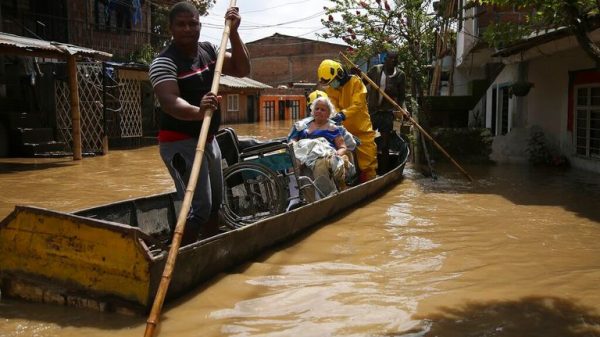A meteorite four times the size of Mount Everest may have helped life to thrive after it smashed into Earth, research suggests.
The S2 meteorite crashed into our planet around 3.26 billion years ago and such impacts are usually considered disastrous for life.
But experts suggest the conditions caused by the impact of the space rock, which had a diameter of 37-58km, might have caused certain life forms to bloom.
“We think of impact events as being disastrous for life,” said Nadja Drabon, an early-Earth geologist and assistant professor in the department of Earth and planetary sciences at the University of Harvard in the US.
“But what this study is highlighting is that these impacts would have had benefits to life, especially early on … these impacts might have actually allowed life to flourish.”
S2 is estimated to have been up to 200 times larger than the meteorite that killed the dinosaurs.
Analysis, published in the Proceedings of the National Academy of Sciences journal, suggests it triggered a tsunami that mixed up the ocean and flushed debris from the land into coastal areas.
The top layer of the ocean boiled off due to the heat from the impact, which also heated the atmosphere, experts said, while a thick cloud of dust blanketed everything.
But bacterial life rebounded quickly, according to the research, bringing sharp spikes in the populations of single-celled organisms that feed off phosphorus and iron.
Iron was likely stirred up from the deep ocean into shallow waters by the tsunami, while phosphorous was brought to the planet by the meteorite itself and from an increase of erosion on land, the scientists suggest.
Iron-metabolising bacteria would have flourished in the immediate aftermath of the impact, Prof Drabon’s findings indicate.
Experts suggest such a shift towards iron-favouring bacteria could provide a snapshot of early life on Earth.
Evidence of the impact of S2 can be found in South Africa’s Barberton Greenstone belt today.
“Picture yourself standing off the coast of Cape Cod, in a shelf of shallow water,” Dr Drabon said.
“It’s a low-energy environment, without strong currents. Then all of a sudden, you have a giant tsunami, sweeping by and ripping up the sea floor.”



























